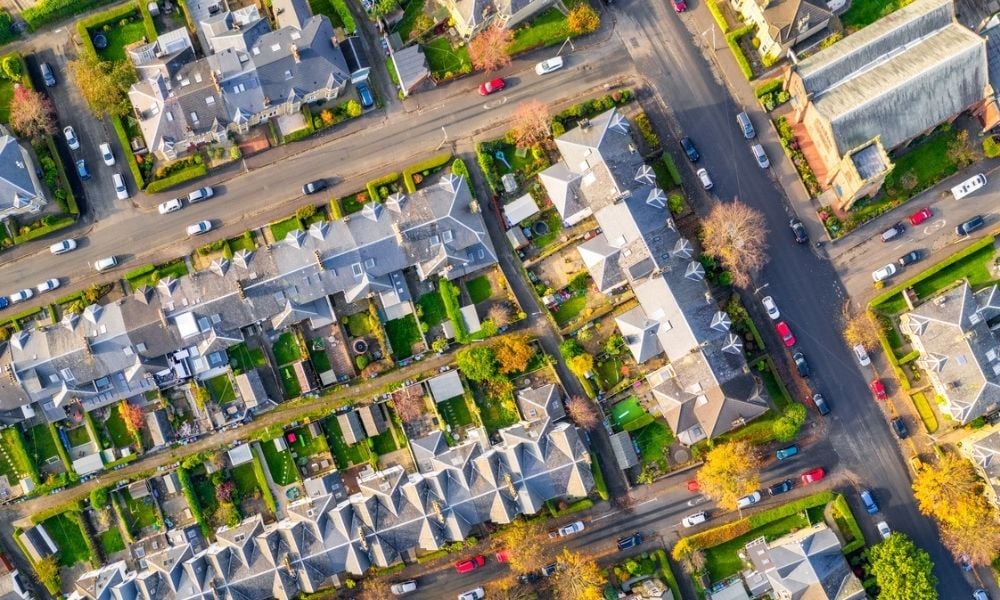80% of borrowers on fixed rates

The UK housing market is facing rate hikes from a position of strength, according to Iwona Hovenko, equity research analyst for European real estate and construction at Bloomberg Intelligence.
This strength is because the increases are coming from historical lows and resilience has been bolstered by much-improved lending discipline since the global financial crisis.
“Indeed, despite the headwinds from rising rates and inflation, UK housing demand has been extremely robust in early 2022,” Hovenko said.
The increase to the base rate is largely not being felt by borrowers as 80% of all mortgages outstanding are on fixed interest rates, with 90% or more of all new mortgages extended on such terms since 2018, and 94% in 2021, based on Bank of England (BOE) data.
Read more: Bank of England announces interest rate hike – reaction pours in
Even as repayments are set to increase in line with new lending, this comes from a historically low level, according to Halifax, and Hovenko believes the overall cost of servicing mortgages is affordable compared with long-term averages.
“For existing borrowers that need to refinance their loans, about two-thirds of outstanding mortgages include capital repayment, which may cut the loan-to-value ratio and help keep mortgage-rate rises below the incremental BoE increases,” she said.
The outlook for interest rates also looks uncertain, as the Bank of England has to balance higher inflation with risks to economic growth stemming from the war in Ukraine.
The current view is for the 25bp hike in March to be followed by another one in May, then a pause to reassess.
Lessons learned
Despite a Bank of England rate cut during the pandemic, banks were wary of a COVID-19 hit and cut lending to riskier borrowers while being inundated by clients with bigger deposits rushing to buy larger homes. Based on BoE data, the two-year fixed rate on 90% LTV mortgages was 2.03% in February, versus 3.09% in June and 3.75% in December 2020, only 14bps above April 2020’s 1.89% low.
Hovenko believes that lessons learned in the aftermath of the global financial crisis may support UK housing resilience. Lending rigor has improved significantly since 2007, with mortgages above a 90% LTV multiple making up only 3% to 6% of all new lending, as a percentage of gross advances, compared to 13% to 15% in 2007, according to Bank of England data.
“Homebuyers with deposits of 5% or less accounted for fewer than 0.5% of gross mortgages since at least 2013, versus 6% in 2007,” Hovenko added.
On average, UK home-movers had deposits equivalent to 33% of the price of the house being purchased in 2021, while even first-time buyers came up with a 25% down payment on average, rising to 31% in London, ONS data showed.
Read more: What you need to know about down payments on homes in the UK
Moreover, Hovenko explained that worries about the drag on UK house prices from the end of the stamp-duty holiday, the cost-of-living squeeze and rising interest rates look unlikely to materialise near-term.
She believes that a paucity in the supply of homes for sale amid an existing shortage could drive price growth over the coming months.
“That is clear from our analysis of the RICS residential market survey that offers early housing sentiment insight,” Hovenko said.
Based on the survey published in early March, a net balance of 78% of surveyors saw prices increasing in the next year, up from 76% the previous month.
“The largest property portals also point to UK housing-market activity remaining solid in 2022, even after 2020/21 strength, driven by unrelenting demand and very tight supply,” Hovenko added.
Rightmove’s March data demonstrates the wide supply-demand gap, with twice as many buyers as there were sellers.
The low stock of homes for sale is also evident given the average estate agent had 41 homes on its books in February, including ones under offer, compared to 57 a year earlier. That, in turn, has significantly cut the time it now takes to secure a buyer to just 36 days - versus 60 days in February 2021.
Of note, mortgage approvals reached 74,000 in January, 12% above the March 2013 to February 2020 monthly average of 66,000.
“This follows robust 2020/21 housing activity, boosted by shifting buyer priorities and tax incentives, and points to continued strength,” Hovenko concluded.



